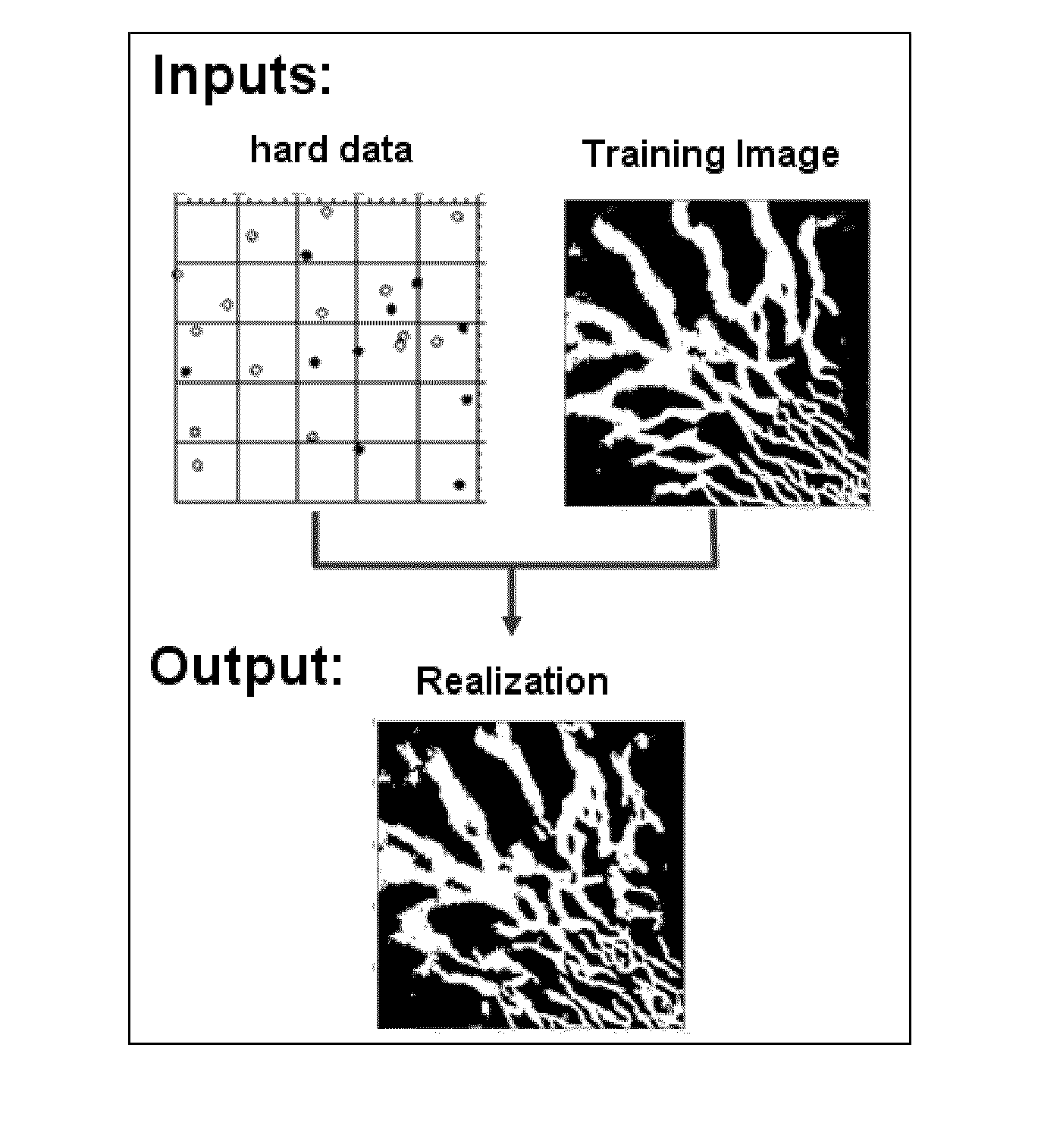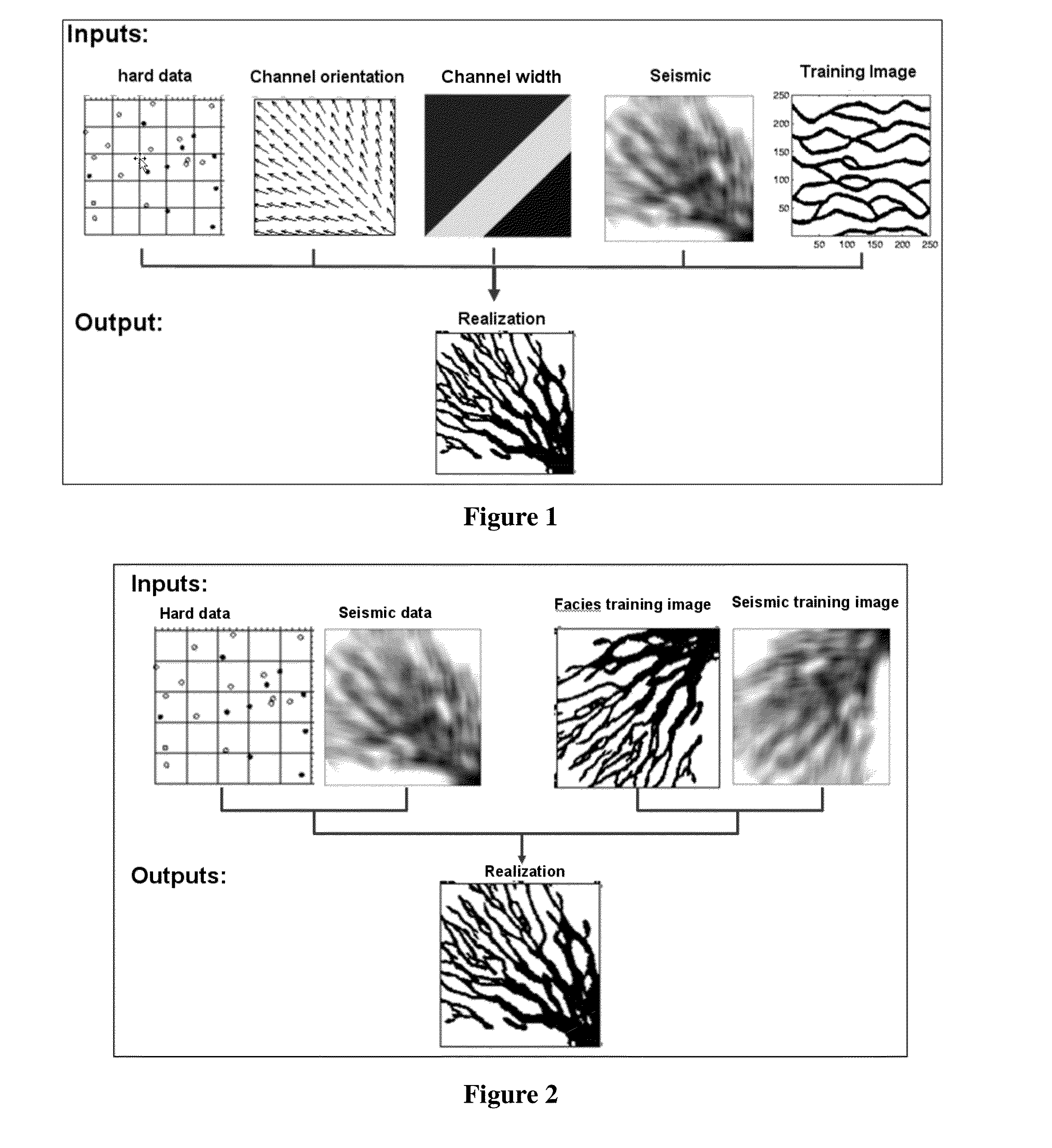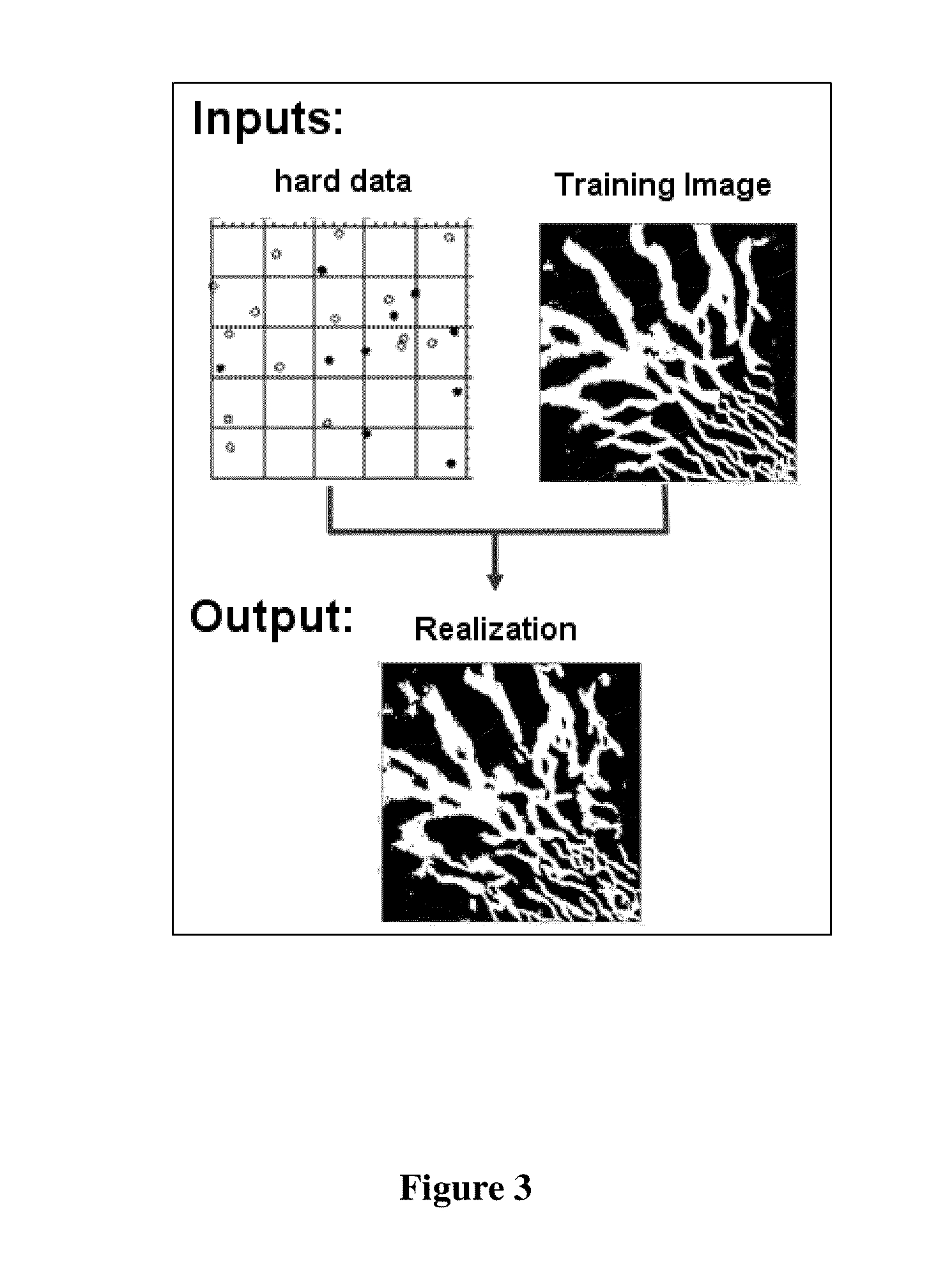Reservoir modelling with multiple point statistics from a non-stationary training image
a multi-point statistic and training image technology, applied in the field of mathematical modeling of three-dimensional regions, can solve the problems of inflexible data conditioning, inability to capture the complexity of geological patterns/features, and inability to adapt to random function based methods, etc., to achieve the effect of reducing the complexity of the geological pattern/feature, not being flexible enough for data conditioning, and not being able to accurately reflect the location of the above mps method
- Summary
- Abstract
- Description
- Claims
- Application Information
AI Technical Summary
Benefits of technology
Problems solved by technology
Method used
Image
Examples
example 1
[0070]In this example, an artificial, small, two dimensional non-stationary training image was created to testing purposes. A method in accordance with the invention was then used to create a non-conditioned MPS realization, that is to say a realization based on the training image only and not on any hard data.
[0071]The realization was created using a 21×21 template, that is to say the neighborhood window measured 21 cells by 21 cells. The Gaussian kernel with parameters σx=σy=5 was used. FIG. 4a shows the training image, FIG. 4b shows the MPS realization. FIG. 4c shows the difference between the MPS realization and the training image. Since no hard data was used, the realization is simply an equally probable alternative version of the training image.
example 2
[0072]In this example, another small, artificial, two dimensional non-stationary training image was created, together with nine hard data points. In this example a 51×51 template was used and with a Gaussian kernel of parameter σx=σy=5. FIG. 5a shows the training image. FIG. 5b shows the MPS realization, conditioned to nine hard data. In both images, the hard data locations are shown by black dots; facies at these locations are the opposite of the facies of the corresponding cells in the training image. FIG. 5c shows the difference between the MPS realization and the training image.
[0073]In closing, it should be noted that the discussion of any reference is not an admission that it is prior art to the present invention, especially any reference that may have a publication date after the priority date of this application. At the same time, each and every claim below is hereby incorporated into this detailed description or specification as an additional embodiment of the present inven...
PUM
 Login to View More
Login to View More Abstract
Description
Claims
Application Information
 Login to View More
Login to View More - R&D
- Intellectual Property
- Life Sciences
- Materials
- Tech Scout
- Unparalleled Data Quality
- Higher Quality Content
- 60% Fewer Hallucinations
Browse by: Latest US Patents, China's latest patents, Technical Efficacy Thesaurus, Application Domain, Technology Topic, Popular Technical Reports.
© 2025 PatSnap. All rights reserved.Legal|Privacy policy|Modern Slavery Act Transparency Statement|Sitemap|About US| Contact US: help@patsnap.com



